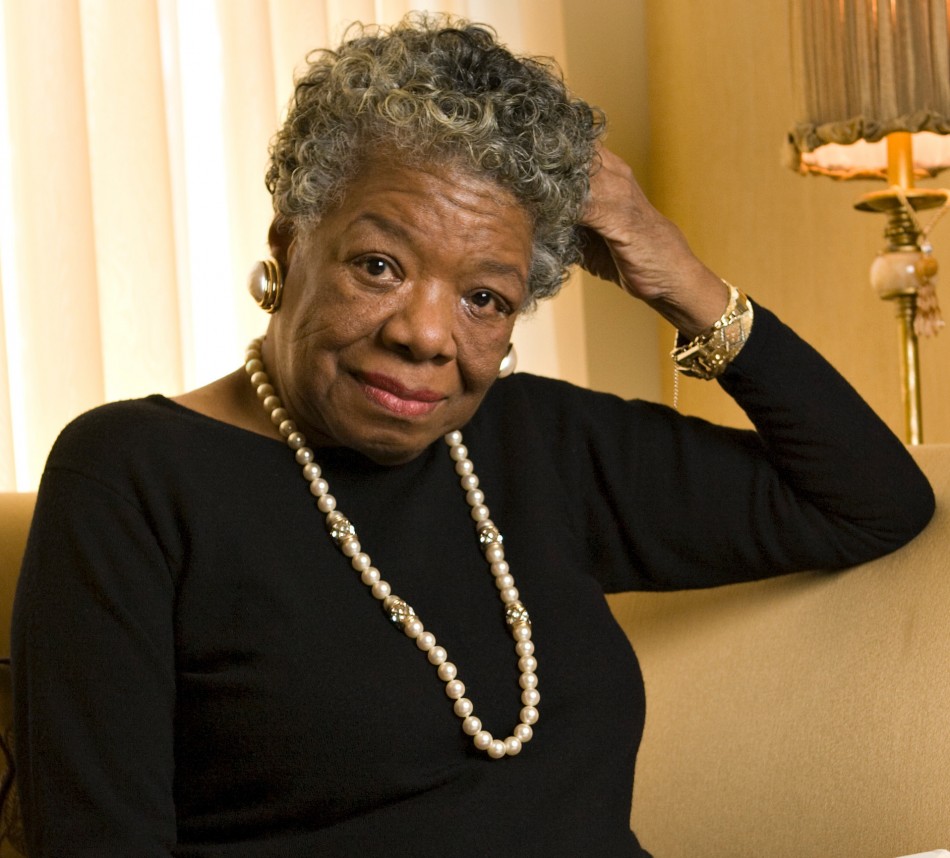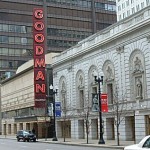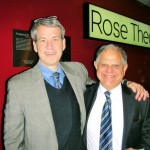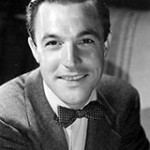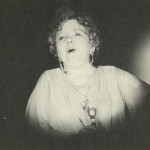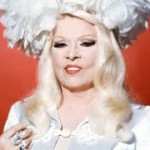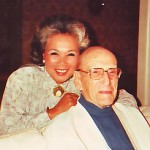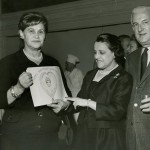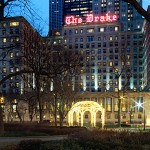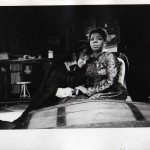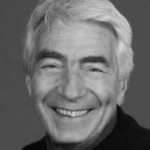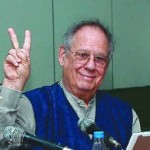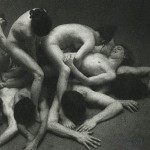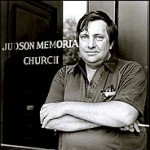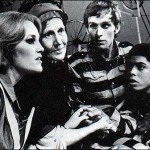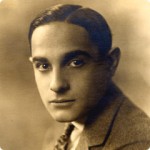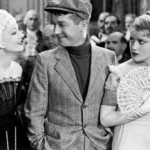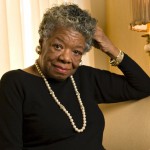

Maya Angelou
by Michael Elihu Colby
Part 18: Fast Forward
My remaining years at Northwestern U. zipped by, as I commuted between Evanston IL and the Algonquin. While at Northwestern, I had the added attraction of being able to take the 45-minute train ride to Chicago to see theatre. By sheer luck, one of Chicago’s foremost stage companies, the Goodman Theatre, produced two Rodgers & Hart shows back-to-back during my Northwestern years. Accordingly, I was able to catch up with Dorothy Hart as her guest for the Goodman openings of The Boys From Syracuse and Pal Joey. I also began a lifelong friendship with her son, Larry Hart II, a political consultant who was born shortly after his namesake passed away.
Even though it was springtime at these opening nights, the cold-sensitive Dorothy would arrive in heavy winter coats—which she wore through the entire performances. An observer might paraphrase the Larry Hart lyric, “Spring is here, why doesn’t the heat defrost her?” Still, it didn’t matter—no one could be warmer than she to her friends.
She was my favorite person with whom to “talk theatre.” As a night owl living in Palm Springs, she was the one person I could phone in the middle of the night for advice and consolation. Then, on September 30, 1973, I was Dorothy’s guest for a once-in-a-lifetime event: a University of Southern California tribute to Lorenz Hart, “Hart of the Matter,” featuring many of the lyricist’s original stars. I sat at a table with Mrs. Hart, her son, and several people who’d been close friends of Lorenz Hart. The presentation itself was electrifying. Gene Kelly performed his songs from Pal Joey including “I Could Write a Book;” Benay Venuta revived “Everything I’ve Got” from By Jupiter; and three-time Rodgers & Hart leading lady Helen Ford sang “Here In My Arms” (Dearest Enemy). When Helen Ford spoke, she mentioned meeting Richard Rodgers at the Algonquin and everyone at our table turned and smiled at me. Others appearing included Nanette Fabray (from By Jupiter), Shirley Jones & Jack Cassidy, Donald O’Connor, Lisa Kirk, Betty Comden & Adolph Green, and Henry Fonda. In the audience were even more stars, such as Mae West (facing our table in a big white outfit) and Irene Dunne (the radiant screen star who’d been the ingénue in Rodgers & Hart’s She’s My Baby). I thought that event couldn’t be topped.
Yet it was. Fast-forward to June 1987, and Dorothy invited my wife Andrea and me to be her guests at a spectacular Centennial occasion. It was a weekend marking the 100th birthday of the still very lively director/playwright/producer George Abbott—at the Great Lakes Festival in Cleveland, Ohio. Jumping in a cab on a busy Friday afternoon in Manhattan, Andrea and I barely made it in time to our flight and then to the theatre for the opening event of the Centennial, a performance of the Abbott/Philip Dunning play Broadway. Andrea and I were frantic that we’d be late and embarrass Mrs. Hart, who was there representing two Abbott alumni: her brother-in-law Lorenz Hart (who’d written lyrics on such Abbott shows as Pal Joey) and her late husband Teddy (who’d acted in Abbott’s shows, Three Men On a Horse, Room Service, and The Boys From Syracuse). With 5 minutes to go before the 8 PM curtain, Andrea and I rushed to our ringside seats, glimpsing rows of famous faces associated with Abbott. It was like a surreal dream to edge our way through rows where side-by-side sat Harold Prince, Nancy Walker, Comden & Green, Phyllis Newman, Eddie Albert, Maria Karnilova, Sheldon Harnick, Donald Saddler, Garson Kanin, Marian Seldes, and Joe Bova (whose kiddie TV show was one both Andrea and I grew up watching). Capping things, Andrea and I sat right nearby George Abbott and his wife Joy—who also happened to be frequent occupants at the Algonquin. Only the week before, People Magazine interviewed him at the hotel, where he’d stated: “My legs may be gone, but my brain isn’t. I’ve still got some more ideas, more plays I want to do.” 1 Throughout the birthday weekend, Andrea and I felt like Broadway history was flashing before our very eyes. All these stage legends participated in symposiums describing their experiences on some of Abbott’s 128 Broadway shows. I’d been to all-star events before, but not in a hundred years do I expect to experience another Centennial like this one.
During my years at Northwestern, Grandma Mary met me in Chicago as well. Usually we’d spend the weekend together at the chic Drake Hotel. She knew I loved the food there, especially the Caesar salads and rice pudding; and, as a matter of fact, so did she. She also sometimes needed a break from New York City. Even though she herself could provoke him, Grandpa Ben was quite irascible at times, worsened by a hearing loss and periodic buzzing sound in his ear that doctors couldn’t much help. Even more upsetting to Grandma were regular phone calls—at all hours—from my mother, tirades blaming Grandma for perceived wrongs. Grandma would just sit there, quietly turning pale during my mother’s rants—as if allowing her to vent would exorcise the situation. Grandma’s fervent wish was for Mother to get over her anger and feel at peace. Ironically, it was Grandma’s indulgence that undermined Mother’s getting the kind of help she needed (e.g. how Grandma coached Douglas and me to side with Mother when my parents went for counseling years earlier). Fast forward: today my mother is in a far better state of mind, thanks largely to the medical and psychiatric care my brothers and I at last arranged for her—after my grandparents passed away. The saddest aspect is that this didn’t happen earlier. It would have been a blessing for my grandmother and would have made a huge difference in both my parents’ lives.
When I was a Senior at college, Grandma made one trip to Chicago where she and I grated on each other’s nerves like nail files. Grandma didn’t seem to understand that I had an upcoming college exam to focus upon. She had her heart set on a recommended restaurant in Chicago whereas I asked to just eat downstairs at the Drake Hotel. Tempers flared before we went to her preferred restaurant. Inevitably, the evening wasn’t pleasant; I made several comments about manipulation that she didn’t like. The next morning, she decided it was important to clear the air, sitting me down for a talk on what she called my “belligerence.”
“Michael, you said some awful things to me last night,” she asserted.
“Grandma, I’m sorry, it’s just that…”
She continued with the air of a sage philosopher: “Listen, I understand. I really do. You don’t have to explain. I’ve lived a long time. And experience teaches you things. I’ve been through World Wars, had to flee Russia. Seen the world change. I’ve lost precious family members and witnessed many tragedies. I understand people, I’ve watched what goes on in our family, and I know just why you’ve been acting this way.”
“You do?” I replied, tears welling up in my eyes.
“Yes, Michael.” She paused for a moment, then with a profound sigh, shared her wisdom: “Michael. You were born with a mean streak…and you can’t help yourself!”
In any case, despite the distractions of the weekend, I did well enough on my exam. In fact, I got through Northwestern with a higher grade average than I’d had at Woodmere Academy. During a single semester, I even got A’s in two courses I was taking simultaneously: one on the poet William Blake, the other a comparative course on Gothic Literature and Horror Movies (The latter course was a snap for me: alongside musicals and comic books—monster movies were my third major outlet growing up; I didn’t need sports—they were too realistic).
After graduating Northwestern with a B.A. in English Literature, it was: New York City, here I come. I enrolled in the graduate school of Drama at New York University and became a full-time resident at the Algonquin. That meant I wasn’t simply seeing Algonquinites as guests but as neighbors. One constant presence was a tall, elegant woman whose accomplishments were inspirational, both in their breadth and in the early tribulations she had to overcome. Maya Angelou is described on her official website as “a global renaissance woman…a celebrated poet, memoirist, novelist, educator, dramatist, producer, actress, historian, filmmaker, and civil rights activist.” Possibly her crowning achievement was her autobiography I Know Why the Caged Bird Sings. Set in the South, the book poetically portrayed how she overcame racism, rape, and social isolation through self-education. She was San Francisco’s first black female cable-car conductor, danced with Alvin Ailey, and toured as a singer in Porgy and Bess.2 In other words, there wasn’t anything she couldn’t do when she set her mind to it.
One of the first times I saw her at the hotel was in 1973 when she appeared in the Broadway play Look Away, wherein she played opposite Geraldine Page as the African-American confidante of the institutionalized Mary Todd Lincoln. Though the play received negative reviews and only lasted one performance, she was so impressive she received a Tony nomination as “Best Supporting Actress.”
Even so, she was remarkably humble and friendly when you approached her in the lobby. I remember one night she took my grandmother and me out for Cuban food, which I’d never tried before or since; unfortunately, I don’t recall what was said—I was just in such awe being around her.
Yet as worldly as Maya Angelou was, she sometimes had more mundane concerns. Michael Hurley, who clerked the Algonquin front desk (from 1982-1987), recounted to me a fashion emergency she faced at the hotel:
Early one morning Ms. Angelou (tall, very friendly, huge smile) came to the desk wearing a beautiful white silk blouse with cuffed sleeves, but she’d forgotten to pack cuff links. She asked if I had anything that would work. I told her I’d look around the front desk. A few minutes later she came back and proudly showed me that a pair of huge clip-on earrings did the trick. A good thing, too, as they looked so much better than the paper clips and rubber bands I’d come up with. She was such a nice lady.
Flash forward: years later, when I became a substitute teacher, there was a girl in one of my classes who—probably like thousands of little girls—was named after Maya. The girl worshipped her namesake to such an extent that I contacted Maya Angelou to see if she’d write a note to the girl. Overnight, the loveliest note arrived for me to deliver to the girl. The student responded like she’d just received the Holy Grail. And I’ve no doubt Maya probably did the same for dozens of little girls named after her.
Maya was equally gracious when—in 2000—I contacted her about a memorial for my grandparents, held at the Algonquin. Maya sent the following note, which I read aloud at the memorial:
Friendship and affection know no man-made barriers; age nor culture, race nor class. Ben and Mary Bodne were friends to me and we respected and cared for each other for nearly thirty years. After Ben’s death, I always found time to see, chat with, and listen to Mary Bodne. In fact, when on one of Oprah’s visits to me at the Algonquin, since I knew how much Mary Bodne loved Oprah, I invited her down to my suite. She came dolled up and carrying a photograph. I think Ben had been dead two years then. She showed Oprah the photograph of Ben Bodne as a young, dashing, thirty-five year old, and said, “Here is my buddy. We lived together in love and joy for over sixty years. Isn’t he good looking?” Who wouldn’t love a woman who loved love so much.
The Bodne’s made our world richer. We are poorer without them.
Maya Angelou 3
The world is infinitely poorer without Maya Angelou.
Someone else I regularly saw in the Algonquin lobby was producer/director Gordon Davidson, founder and head—until 2005—of L.A.’s Mark Taper Forum. He was described in the L.A. Times as “eminence grise of the regional theater movement, crusading champion of Los Angeles theater.”4 Davidson was constantly commuting between California and New York as shows that originated at the Taper Forum were picked up for New York production, including The Trial of the Catonsville Nine, Me and Bessie, The Shadow Box, Children of a Lesser God. However, Davidson’s relationship to the hotel shifted. As Algonquin employee Michael Hurley told me:
Gordon was a frequent guest. Always very friendly with a huge smile. When I moved to L.A. I ended up working at his Center Theater Group for several years and every time I bumped into him he’d say how much he loved the Algonquin. BUT it wasn’t until 2008 that he told me the following: He said that he’d always stayed at The Royalton when he came to NYC. The day after he won the Tony for [producing] Children [of a Lesser God]…he said your grandmother called him there and said, “Ok. Now that you have a Tony, you can surely stay at the Algonquin.”
It took me eleven months to complete my Master’s program in Drama at New York University (from Fall through Summer semesters). Enhancing my Drama studies were the plays I could see in the evening—just down the block—with some of the stars staying at the hotel. Among actors at the hotel while doing shows were Jason Robards and Colleen Dewhurst in A Moon For the Misbegotten, Eileen Heckart in Veronica’s Room, Nicole Williamson in Uncle Vanya, and Fionnula Flanagan in Ulysses in Nighttown. Grandma even arranged for me to conduct a breakfast interview with Ms. Flanagan, a Tony nominee, for an assignment at N.Y.U. However, I doubt Grandma had herself attended Ms. Flanagan’s show with its highly publicized nude scene. One might best describe the scene as a precursor of Sharon Stone’s revelations in Basic Instinct. I blushed through that entire interview at the Algonquin, recalling what I’d glimpsed in Ulysses in Nighttown without nightgown.
Other highlights of my program at N.Y.U. were: classes with Richard Schechner; my interviewing off-off-Broadway icon Al Carmines Jr. (Promenade, Peace, In Circles); and my master’s thesis—a collection of recordings and material on Larry Hart. The influential Richard Schechner gained renown for his “radical” stagings of classical material”5—such as Dionysus in ‘69” (with audience interaction and full frontal nudity)—and as founding director of The Performance Group, the award-winning off-Broadway company specializing in environmental theatre. His classes at N.Y.U. were bold—to say the least. One night in his Political Theatre course, I was one of a group of students asked to improvise a scene from Edward Albee’s Who’s Afraid of Virginia Woolf?—as might be interpreted by Antonin Artaud. Artuad was the deceased director who specialized in “Theatre of Cruelty,” incorporating violence, sadism, and garden-variety shock. Not knowing quite what to do for our interpretation of “Virginia Woolf,” my student group went around grunting, acting sloshed, and screaming at everyone with lines from the play like “Hey swampy,” “If you existed, I’d divorce you,” “Screw you,” and “You make me puke.” 6 Nothing like this ever occurred in any of my past school experiences (though it was not unlike some nights growing up on Paine Road). Despite these verbal assaults, teacher Schechner said we weren’t being cruel enough. He initiated a game of Truth or Dare where members of our group were asked questions by the class and if our answers were deemed dishonest, the game became “Truth or Bare:” we were told to remove articles of clothing. When I was asked if I’d ever been drunk or cursed like in “Virginia Woolf,” I said I hadn’t—which no one believed. By continuing to tell the truth, I was soon down to my underwear. Shortly, this exercise in “Theatre of Cruelty” became more like “Noh Theatre” as I had noh intention of going further. Fortunately, not being as daring as Fionnula Flanagan, I was literally saved by the school bell. The class—not my modesty—came to an end just in time. I can’t imagine how my family—Grandma in particular—would have responded to this illustration of college tuition expenditures. Though Richard Schechner remains, to this day, an in-demand teacher, I was not surprised to learn that after 1975, tensions led to Schechner’s resignation in 1980 at The Performance Group, which reopened as The Wooster Group under different leadership.7
It was for a much more demure class (titled “New Theatre”) that I met with off-off Broadway wunderkind, Al Carmines. I co-interviewed him alongside Susan Condos, a fellow N.Y.U. student. Carmines was—in the words of a N.Y. Times tribute—“a seminal force in the rise in New York of small, experimental theatres created to challenge what many saw as the commercialization…of Broadway.” 8 Producing plays and musicals at the Judson Memorial Church, where he was also the Reverend, Carmines was a man of many talents: composer, lyricist, actor, and director at the Judson Poets’ Theater located at the church. According to Carmines, in 1961 the Judson became “the first Off Off Broadway theatre to do new plays by new playwrights” (The other pioneering off-off Broadway theatre, Caffe Cino, began with revivals only). 9 Carmine’s musicals—among them Promenade, In Circles, and The Faggot—won 5 Obie Awards and 4 Drama Desk Awards for Carmines. His topics ranged from Abraham Lincoln to Gertrude Stein, Snow White to Mao Tse-tung, gay lifestyles to Christmas. Several of his shows moved on to commercial success, though his one attempt at Broadway—the musical W.C. with Mickey Rooney as “W.C. Fields” and Bernadette Peters—closed in tryout.
Carmines was a large, very welcoming presence during the interview, which is now part of the Judson Memorial Church website. It’s intriguing to me—in rereading that interview decades later—how often I eventually followed his example in my own shows. Carmine’s musicals were produced on a shoestring, often when no one but Carmines would present them, and incorporated an all-sung format—with dialogue scenes thru-composed—that was unusual for musicals of its time. As Carmines told me:
A lot of people felt it was the first time they had seen a musical play—it wasn’t an opera—move in such a way that you didn’t stop everything, have an introduction, do a song, have applause. And then go on to our next bit of dialogue, stop everything, have an introduction & song, and so on. At Judson our early musicals would go in and out of music with no break. 10
He was fascinating company.
The third highlight of my N.Y.U. program—preparing a master thesis on Lorenz Hart—was actually a corollary of the research I began that year for Dorothy Hart’s biography of her brother-in-law. First off, I gathered a definitive collection of recordings of Lorenz Hart songs. At the same time, I spent countless hours at libraries pouring over manuscripts, photographs, and other paraphernalia related to Rodgers & Hart. The sources included the Lincoln Center collection, the Museum of the City of New York, and ultimately the Library of Congress (Washington D.C.). Going through these snapshots of Lorenz Hart’s work created an exhilarating overview of a life in the theatre. There were stories on how Hart took great pride in not just being a songwriter, but in developing characters through his lyrics in such shows as On Your Toes and Pal Joey. There was the report of how dispirited he became when the original N.Y. Times review of Pal Joey didn’t appreciate something so novel and adult for musical theatre. There were newspaper clippings debunking general myths like the claim that Hart always wrote the lyrics AFTER hearing Richard Rodgers’ music. For instance, in one such interview, Hart described how he would write lyrics first on comedy songs and sung scenes (Unlike, say, Oscar Hammerstein II who, Hart claimed, always wrote lyrics to fit Jerome Kern’s music). There were fantastic photographs, such as a double-exposed photograph from the musical Jumbo—its circus setting looking full of apparitions. Though not used in the book, this picture haunted me knowing that Jumbo was the first show my father saw and loved as a child. Spooky, too, was the fact that the show’s location, the Hippodrome Theatre, had subsequently been torn down and converted into the parking garage that is directly across from the Algonquin Hotel.
Most intriguing of all for me was reading how Hart aimed to advance a style of all-sung, all-rhymed musicals. These musicals featured sequences with what Hart called “rhythmic dialogue” in which scenes didn’t stop between songs but continued via music and lyrics that bridged events in lieu of dialogue. Such Hart sequences can be found in the movies Love Me Tonight and Hallelujah I’m a Bum. Hart’s intent reminded me of what Al Carmines strove to do in his musicals, as would writers of future musicals such as The Golden Apple (composer: Jerome Moross; lyrics: John Latouche) and my own (Charlotte Sweet).
My year at New York University indoctrinated me in aspects of stage writing and off-off Broadway, instrumental in my career—if you fast-forwarded by a decade or two. Or even sooner: I’d be putting that knowledge to work within months as I began my first professional forays into the theatre world.
Next part: That Mug Is Mine
1Arias, Ron. “Marking His First Century, George Abbott Once Again Brings Broadway to Broadway” in People Magazine. New York NY: July 6, 1987 (Vol. 28, No. 1).
2Johnson, Guy B. Biography from “Dr. Maya Angelou, The Official Website:” http://mayaangelou.com/bio/ © 2014.
3Angelo, Maya. A letter spoken at A Celebration of Mary and Ben, May 22, 2000.
4McNulty, Charles. Gordon Davidson is till giving to theater” in The Los Angeles Times. February 09, 2013
5Richard Schechner biography for “The 10th Annual BURIAN LECTURE (“The Relationship of Practice and Theory”). New York State Writers Institute, State University of New York. February 28, 2006.
6Albee, Edward. Who’s Afraid of Virginia Woolf?, New York NY: Scribner © 1962.
7“The Performance Group” in World Heritage Encyclopedia, 2013: http://worldheritage.org/articles/The_Performance_Group
8Martin, Douglas. Al Carmines obituary in The New York Times. New York, NY: August 13, 2005.
9Colby, Michael & Condos, Susan. “Al Carmines and the Judson Poets’ Theater.” 1974: http://www.judson.org/images/AlCarminesandtheJPT.pdf.
10Colby, Michael & Condos, Susan. “Ibid.”
© 2014, Michael Colby
*No copyright Infringement Intended. For Entertainment Purposes Only.
Click Below for Parts 1 thru 17 :
https://www.theaterpizzazz.com/algonquin-kid-part-way-back/
https://www.theaterpizzazz.com/algonquin-kid-part-2-algonquin-renaissance/
https://www.theaterpizzazz.com/algonquin-kid-part-3-series/
https://www.theaterpizzazz.com/algonquin-kid-part-4-series/
https://www.theaterpizzazz.com/algonquin-kid-part-5-series/
https://www.theaterpizzazz.com/algonquin-kid-part-6-series/
https://www.theaterpizzazz.com/algonquin-kid-part-7-mazel-tov-robert-f-kennedy/
https://www.theaterpizzazz.com/algonquin-kid-continues-part-8-series/
https://www.theaterpizzazz.com/algonquin-kid-part-9-british-staying/
https://www.theaterpizzazz.com/algonquin-kid-musicals-r-us-part-10/
https://www.theaterpizzazz.com/algonquin-kid-learning-ropes-part-11/
https://www.theaterpizzazz.com/algonquin-kid-doesnt-happen-holiday-inn-part-12/
https://www.theaterpizzazz.com/algonquin-kid-part-13-series/
https://www.theaterpizzazz.com/algonquin-kid-moving-days-part-14/
https://www.theaterpizzazz.com/algonquin-kid-part-15-excelsior/
https://www.theaterpizzazz.com/algonquin-kid-coming-attractions-part-16/
https://www.theaterpizzazz.com/algonquin-kid-mean-arnold-schwarzenegger-part-17/


